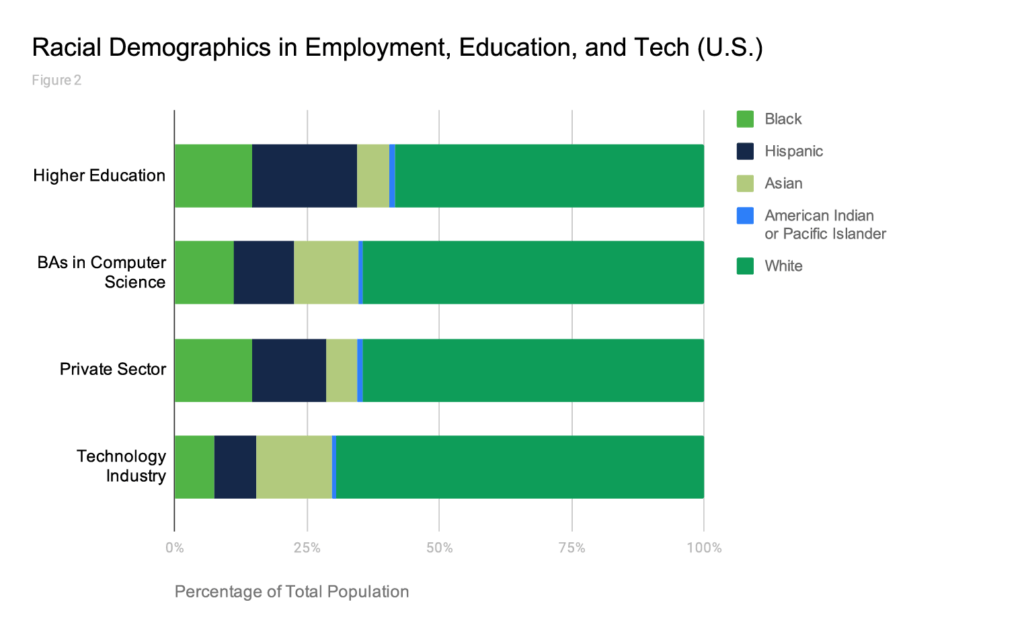
Working at a startup presents a number of challenges for hiring. You have limited resources, you’re lesser-known to those outside of your industry, and you innovate at breakneck speed, making it difficult to articulate what you do. In an industry where candidates are inundated with information, cutting through the noise requires new, ever-evolving strategy.
Compound those challenges with an already-competitive job market, a broad, systemic problem regarding diversity and inclusion in STEM, and inconsistent technical education quality at both the secondary and university level, and what becomes clear is that tech companies need to invest in solutions to disrupt the status quo.
In my first few months at Cockroach Labs, Lindsay Grenawalt (our Chief People Officer) and I sat down to discuss areas for improvement within our recruiting strategies. Given my passion for both education and building vibrant teams, I took on building a national university recruiting program focused on hiring computer science students.
1. Planning and Strategy
In developing university programs, it’s important to begin with two acknowledgments. The first of which is that these programs are long-term investments and the second is that one must develop a data-driven framework for measuring their success over time.
Working with these points in mind, we set the following objectives for our program:
- Build a thoughtful, cost-effective, and repeatable college outreach and hiring effort.
- Establish long-term connections with faculty, staff, and students in computer science.
- Increase employer awareness for short- and long-term hiring purposes.
- Leverage college recruiting as a vehicle for developing robust and diverse talent.
After setting objectives, the next step is to understand the state of the field to identify focus areas and leverage best practices. According to the National Association of Colleges and Employers, an average of 56% of interns convert to full-time hires at companies across the United States. In 2019, only one of four non-intern, new graduate software engineers offered a full-time role at Cockroach Labs accepted. Five of eight former interns invited to return, however, did. The takeaway? Invest in your internship program.
Not only did we develop our college recruiting program to accomplish as much as possible within the challenges I mentioned earlier, but to confront them, as well. After all, the onus of an innovative recruiting team is not only to grow the company we have, but to work towards the company we want to be— in our case, a diverse one.
We know that more diverse companies perform better, but also that diversity leads to better, faster decision-making (think product strategy, hiring committees, marketing, and more). Performance aside, providing equal opportunity for all allows the technology industry to make a meaningful social impact, even in database software.
All of that is to say that at Cockroach Labs, we deeply believe in diversity. Sadly, we do not have a diverse technology team. We know that. We’re hard at work to change it. My goal is to make sure that university recruiting is part of the solution. Recognizing that much of the problem begins with schooling, it became clear that by focusing on education and awareness, we might significantly impact the kinds of applications we see for internships and full-time roles.
1.1 College Recruiting for Diversity
In building our program, we asked ourselves how we might move the needle towards equity. Part of the answer is education.
While women make up over 48% of the private workforce in the U.S., they make up only 35% of the tech industry (Figure 1). Similarly, Black and Latino people each make up 14% of the private workforce in the U.S. but only 7.5% of the tech industry (Figure 2). These disparities are significant. They’re even worse for infrastructure teams.
More women, at 56%, than men, at 44%, are enrolled in institutions of higher learning. Black and Latino people also make up 14% and 19% of the university student population, respectively. Still, those numbers drop again when we look at the percentage of students from those groups graduating with Bachelor’s degrees in computer science. Women receive only 18% of computer science degrees, a precipitous drop. Black and Latino students each contribute 11% each to the total number of computer science degrees conferred annually.
These statistics represent a multi-faceted failure to engage and support historically underrepresented groups in computer science, especially in environments best suited to prepare them for careers in technology.
We realized that if we could get into classrooms and workshops at computer science programs across the country, we could not only share what CockroachDB is with a diverse group of students, but also teach them how it works. The breakthroughs our team has made in computer science are noteworthy. We wanted to shed more light on them.

Source: 1. EEOC, “Special Report on Diversity in High Tech,” 2. Notre Dame University of Maryland, “5 Changing Demographics in Higher Education,” and 3. NSF, Science & Engineering Indicators, 2018.

Source: 1. EEOC, “Special Report on Diversity in High Tech” and 2. National Center for Education Statistics, “Status and Trends in the Education of Racial and Ethnic Groups 2018”
For our team, this was an easy decision. The value our co-founders place on open source software comes from a commitment to access, collaboration, and community benefit. An education-first university program takes that commitment further, generates excitement about our technology, and provides students with a path to using it (or even contributing on Github). This bridges an important gap for undergraduates between what they learn in the classroom and how it can be applied practically. In doing so, we hope to convince more students from diverse backgrounds to stay the course and graduate from computer science programs in greater numbers.
An education-first approach allows us to meet our broader objectives, too. Here’s how:
Thoughtful, Cost-Effective, and Repeatable: By focusing on a targeted presence in classrooms across the country, we reach a more relevant student population. When we do it right, we’ll be welcomed back next year!
Build Short- and Long-Term Relationships in Computer Science: By engaging with faculty and students at some of the best computer science programs in the country, we get to work with the brightest minds in the field today and in the future. Today they’re interns, tomorrow they’ll be engineers.
Increase Employer Awareness: By putting our technology and engineers in the classroom, we raise awareness about Cockroach Labs and CockroachDB. Giving out swag is just a sweetener (though our t-shirts are pretty sweet).
Develop a Diverse Talent Pool: We can only engage diverse student groups and get them excited to apply if we show up, so we made sure to look beyond top 20 CS programs and pay attention to events and programs fostering inclusion.
Over 20% of both Black and Latino college graduates come from Historically Black Colleges and Universities (HBCUs) and Hispanic-Serving Institutions (HSIs). This is why our program includes both. We also paid attention to which schools were investing in diversity in STEM to become early partners in their efforts.
Each of these foci represents a shift in our strategy. In the past, we’ve recruited heavily from the University of Waterloo in Canada with great success. By allocating greater resources to our university program, we have an opportunity to build a broader, more inclusive blueprint.
With a plan in place, we then moved to put it in motion.
2. Action
Define Engagement
Once you have a framework to guide your efforts, you can leverage it to select target universities and define engagement strategy. Ours is driven by seeking out the highest volume of students studying relevant technology while keeping an eye on cost. This meant focusing on class lectures, technical information sessions, hackathons, and other educational efforts.
Starting with an outreach campaign to some of the country’s leading academics in database science, we created a 16-event, 13-college program in just under 3 months. We shared our architecture with a Database Management Systems class at Brown University, spent a weekend at CalHacks helping students build projects with CockroachDB, and are planning a workshop to introduce New York City students to the world of open source.
Build Your Tools (and Prepare to Iterate)
To ensure that your program’s impact is consistent, it’s necessary to develop resources that tie back to your goals. This will also make it easier to operationalize a university program with a high number of volunteers from across your company. For us, this meant preparing presentations, documentation with frequently asked questions, and leaving students with reference material to ensure that our interactions don’t begin and end with our university recruiting visits. They’re a starting point, not an outcome.
To prepare for the program’s kickoff, I partnered with Amruta Ranade, a Senior Technical Writer, and Ben Darnell, our Chief Architect and co-founder, to develop an architecture talk specifically for the classroom. Their expertise in both articulating our software’s design and making it accessible to new audiences proved crucial to ensuring that our lectures would be both technically interesting and easy to understand.
Following each engagement, I sat down with our staff volunteers to learn what resources were missing so that we assemble them ahead of our next one. Your program can and should get better in real time.
Reach Your Audience
To raise awareness for strategic events, we launched email campaigns and brainstormed incentives to drive attendance. After brainstorming more ways to catch student’s eyes, we launched targeted Facebook ad campaigns ahead of our visits to new campuses. What we learned is that while food is good, substance and smart technology are better.
In 2019, we went to Howard University and Spelman College. In 2020, we’ll go to at least two HSIs (Hispanic-Serving Institutions), as well. As I write this, we have completed 12 of our planned events and are putting together analytics dashboards to monitor the program’s impact on our awareness and hiring efforts.
3. Measuring Success of the College Recruiting Program
University recruiting programs are first and foremost meant for students. That’s why we collect feedback from students and their instructors to ensure our talks are engaging, educational, and adding value to their learning. Otherwise, our program isn’t working.
The feedback doesn’t end there. We check in with our team after each event to make sure they have what they need to realize the program’s mission and to gain their perspective on whether we’re seeing the right results. From these check-ins, we learned which universities and events had uniquely diverse audiences. Needless to say, we’ll be going back!
To measure awareness, we’re collecting information at our events to learn how many students hear about Cockroach Labs or CockroachDB for the first time at one of our engagements.
Working with Shannon Zwicker, our Recruiting Operations Manager, we outlined a number of metrics for the program. As an overall baseline, it’s important to measure the total number of applications to entry-level roles year over year. This can tell us whether we’re raising awareness (alongside our marketing team, of course) and getting enough applications to fill our roles. All of the data we gather will also be evaluated for each school we visit to measure and compare outcomes.
To better understand strengths and pain points in the hiring process, we will collect data on pass-through rates at each stage of university recruiting interviews. This includes the total number of hires through the program, an essential performance indicator.
While we won’t set quotas for hiring, we are going to monitor applications for demographics to ensure that we are conducting the appropriate outreach and trending in a more equitable direction. All of this is a work in progress, but we want to learn as much as we can to improve the program every year.
4. Conclusion
We’ve set out this year with ambitious but achievable goals for our university recruiting program. They’ll only get bigger next year. Building this program now will add value to our business and address many of the hiring challenges I mentioned earlier.
If you want to put diversity first in hiring, an inclusive university program matters. It means thinking outside of the box, finding new ways to reach more students, and making sure that your team is going the extra mile to open up new paths to opportunity. That’s what we’re working on at Cockroach Labs.
We know that our strategies won’t work for every company, but if you want to learn more about how we’re optimizing college recruiting for diversity and inclusion, feel free to reach out to us at recruiting@cockroachlabs.com.
Want to see our recruiting team in action? We’re hiring.


